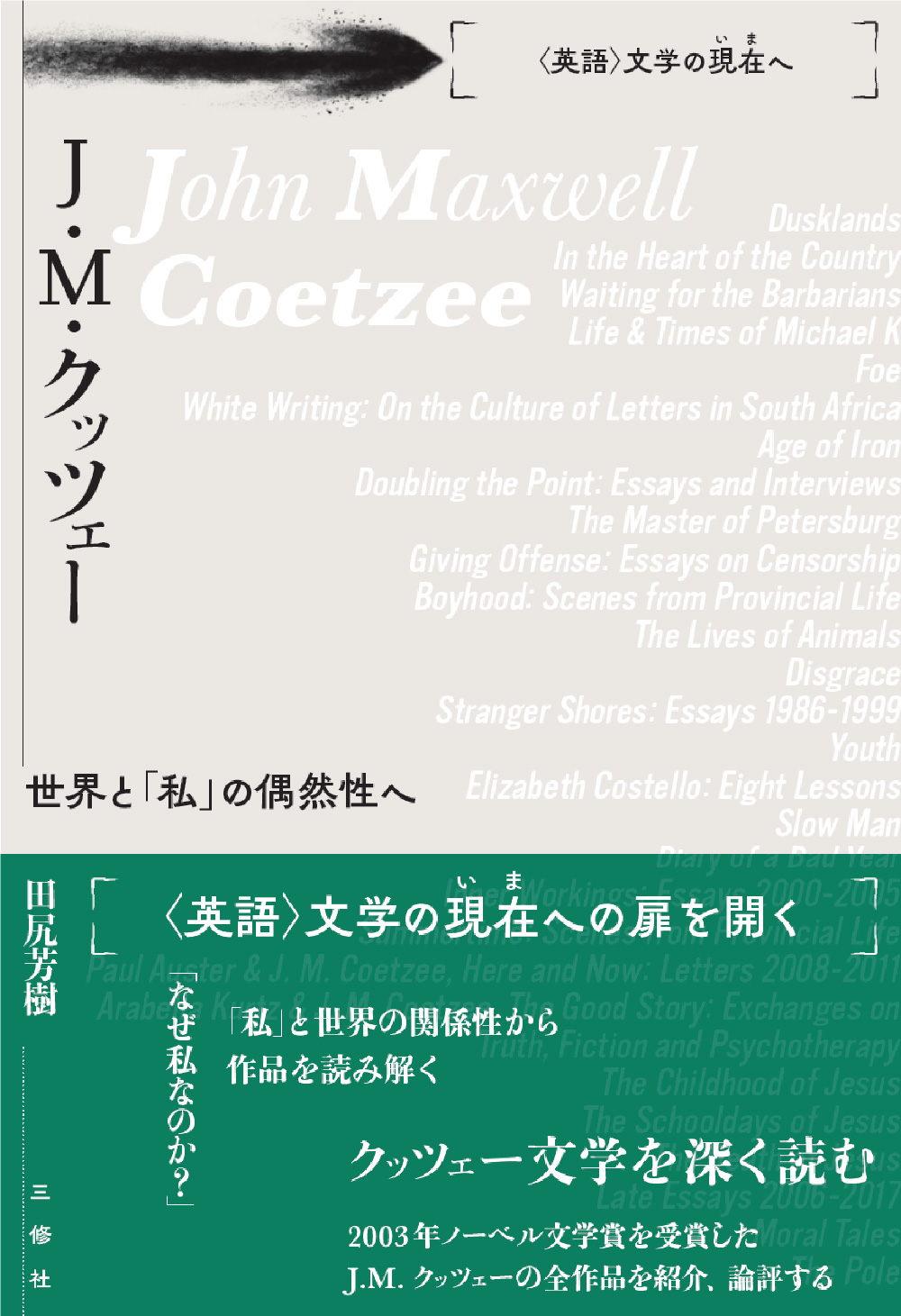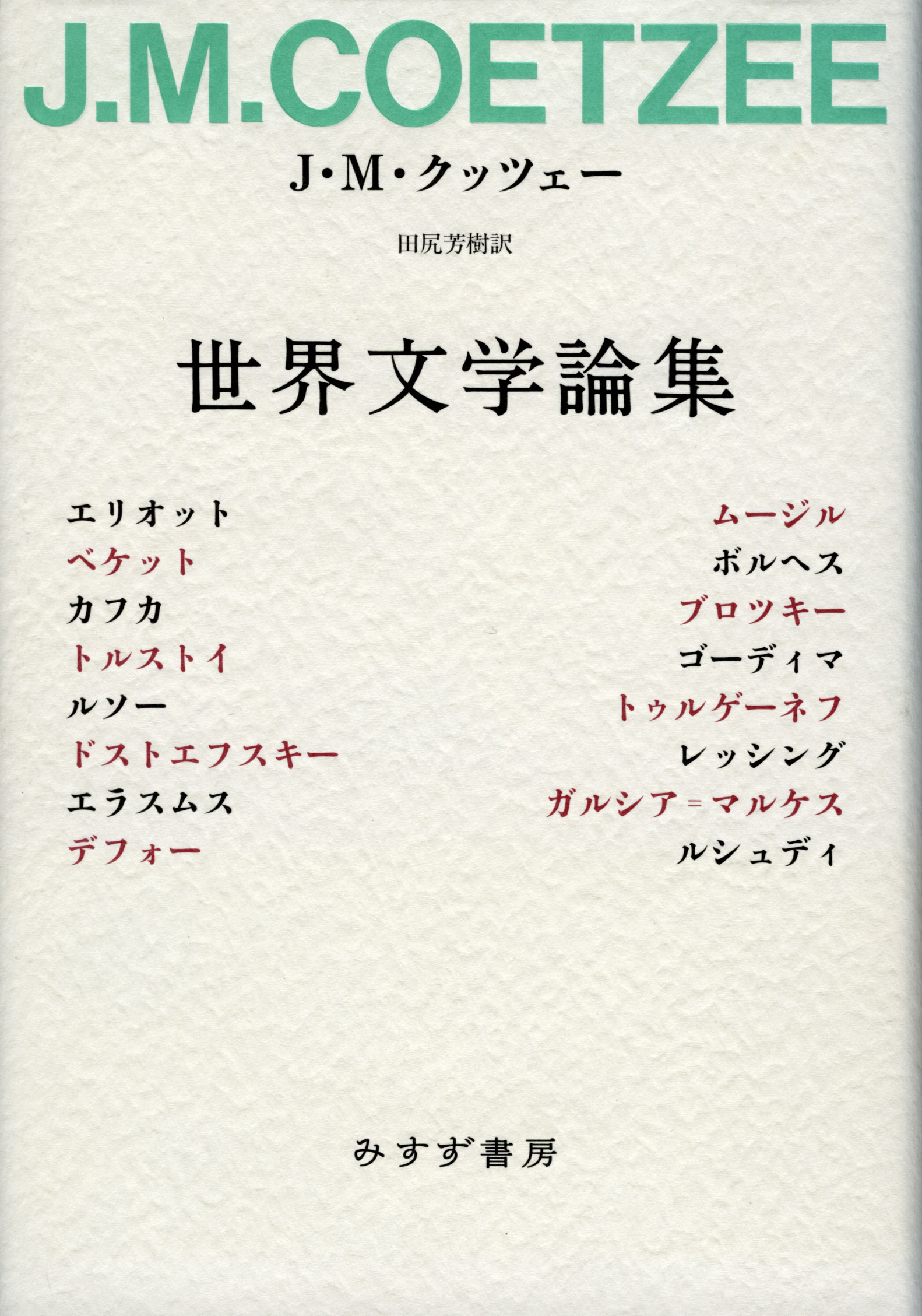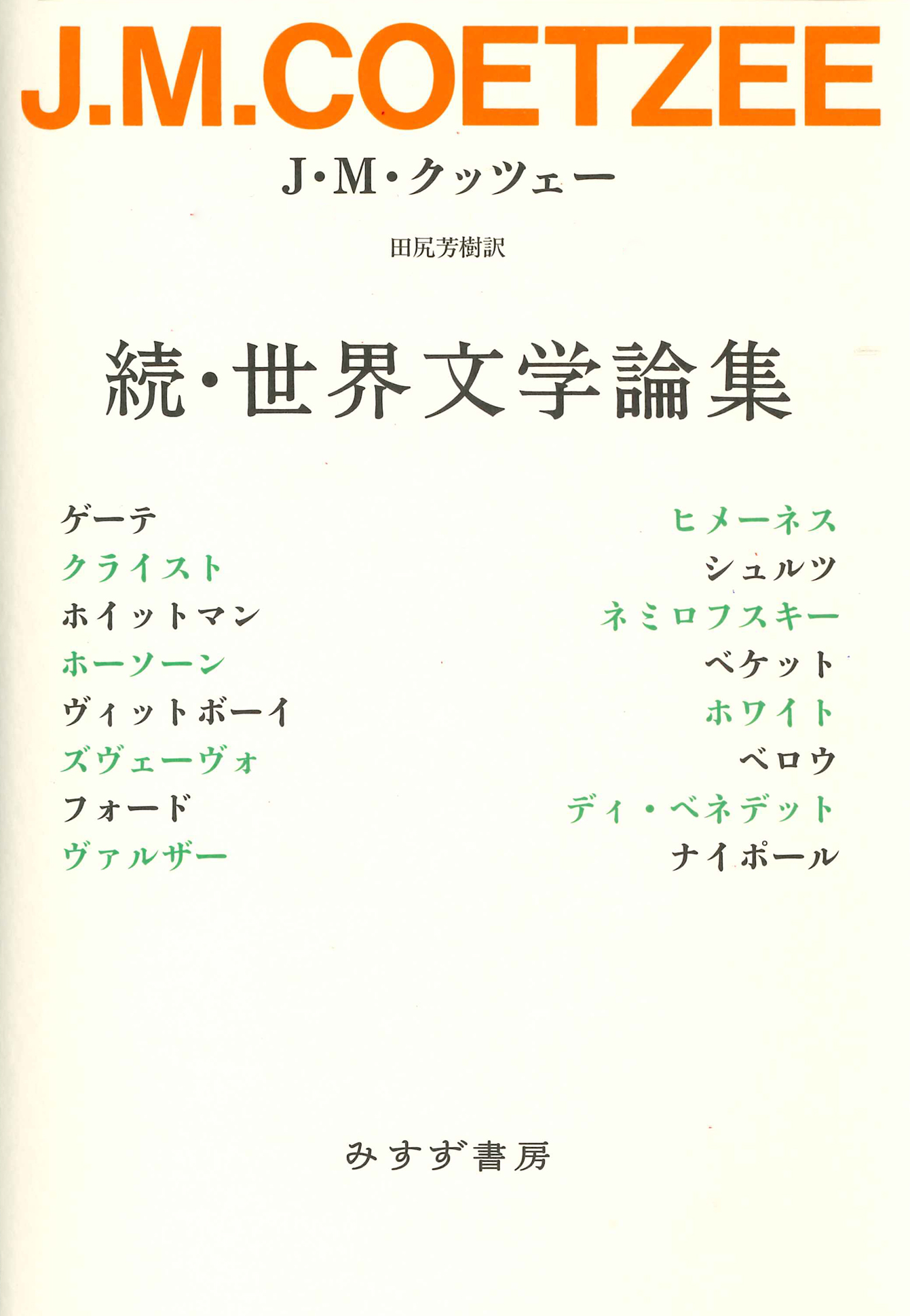
Title
The Current State of “Literatures in English” J.M. Coetzee (Towards the Contingency of the World and “I”)
Size
352 pages, 127x188mm, softcover
Language
Japanese
Released
March 25, 2023
ISBN
978-4-384-06045-4
Published by
Sansyusha
Book Info
See Book Availability at Library
Japanese Page
This book serves as a guide to the world of John Maxwell Coetzee, the South African winner of the 2003 Nobel Prize in Literature, by describing and reviewing all his major works (both novels and critical essays) in the chronological order of publication. It is also intended to encourage readers who are already familiar with Coetzee’s work to consider it in greater depth. The discussion of his works is accompanied by biographical information; thus, the book can be read as a critical biography as well.
The Preface begins with a description of the history of South Africa, the country where Coetzee was born and raised, followed by a biographical account of his boyhood and adolescence up to the beginning of his career as a novelist (while referring to his autobiographical novels Boyhood and Youth). Next, it provides a brief overview of Coetzee’s subsequent career along with an explanation of the overall structure of the book. At the end comes a review of past research on Coetzee’s works with a clarification of the unique features of this book.
Chapter 1 titled “From the 1970s to the 1980s: Birth and Leap of a Writer” covers the period from the publication of his first novel Dusklands in 1974 to his achievement of international fame as a novelist in the 1980s.
Chapter 2 titled “Multifaceted Developments in the 1990s” examines his works from the 1990s, during which time South Africa saw the end of apartheid and the concomitant dramatic changes.
Chapter 3 titled “Great Transition” deals with the important transitional period in which Coetzee developed from an internationally known “South African writer” to a global writer in a more substantive sense.
Chapter 4 titled “Emigration to Australia and New Explorations” discusses his works after moving to Australia in 2002 and receiving the Nobel Prize in Literature in 2003.
Chapter 5 titled “The “Jesus Trilogy” and Recent Developments” covers various topics including the mysterious “Jesus Trilogy,” which seems to depict the afterlife, and Coetzee’s commitment to “Literatures of the South.”
Addendum I places Coetzee in the context of the modern and contemporary literary history by way of discussing “the end of modern literature,” which is an important theme of his work.
Addendum II is a philosophical exploration of the contingency of the world and “I,” which is also an important theme that becomes more conspicuous in the “Jesus Trilogy.”
These two supplementary chapters delve more deeply into two themes that were not sufficiently explored in the main chapters due to the chronological format of the book. They represent the unique features of this book as an academic monograph on Coetzee’s work.
Other unique features of this book include its close examination of the critical essays of Coetzee, who was also a scholar and critic, and descriptions of the author Tajiri’s personal experiences of interacting with him and participating in international Coetzee conferences.
(Written by TAJIRI Yoshiki, Professor, Graduate School of Arts and Sciences / 2023)



 Find a book
Find a book



